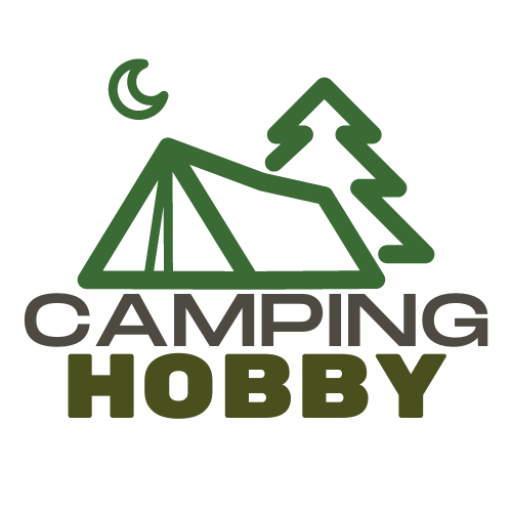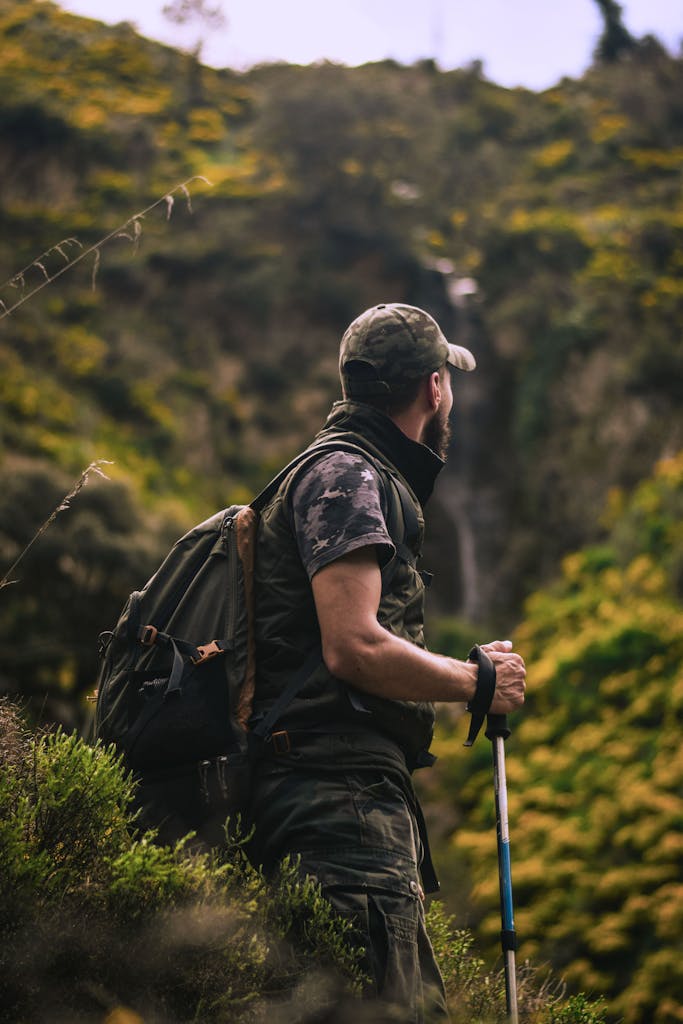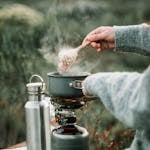State park camping has become increasingly popular in recent years as more people seek to reconnect with nature and escape the hustle and bustle of everyday life. Camping in state parks offers a unique opportunity to immerse oneself in the beauty of the great outdoors, while also enjoying a range of recreational activities and adventures. Whether you’re an experienced camper or new to the world of outdoor exploration, state park camping provides a gateway to adventure and a chance to create lasting memories.
One of the key benefits of state park camping is the opportunity to connect with nature. Spending time outdoors has been shown to have numerous mental and physical health benefits. Studies have found that being in nature can reduce stress, improve mood, and increase overall well-being. In addition, camping allows you to disconnect from technology and reconnect with yourself. Without the distractions of screens and constant notifications, you can truly unwind and focus on the present moment.
The Benefits of State Park Camping: Connecting with Nature and Yourself
Camping in state parks offers a unique opportunity to connect with nature and reap the many benefits it has to offer. Spending time outdoors has been shown to reduce stress levels, lower blood pressure, and improve overall mental health. The sights, sounds, and smells of nature can have a calming effect on the mind and body, helping you relax and recharge.
In addition to the physical health benefits, camping in state parks also provides an opportunity for self-reflection and personal growth. Without the distractions of technology and the demands of everyday life, you can take the time to reconnect with yourself and gain a new perspective on life. Whether you spend your days hiking through scenic trails or simply sitting by a campfire, camping allows you to slow down and appreciate the simple pleasures of life.
Planning Your State Park Camping Trip: Tips and Tricks for a Successful Adventure
Planning a state park camping trip requires careful consideration and preparation. To ensure a successful adventure, it’s important to create a checklist of things to consider when planning your trip. This checklist should include items such as choosing the right campground, packing the necessary gear and supplies, and making reservations in advance.
When choosing a campground, it’s important to consider factors such as location, amenities, and availability. Some campgrounds offer more amenities, such as showers and electricity, while others provide a more rustic experience. It’s also important to consider the availability of campsites, especially during peak seasons when popular campgrounds can fill up quickly.
Once you’ve chosen a campground, it’s time to start packing. Make sure to pack essential camping gear such as a tent, sleeping bag, cooking supplies, and food. It’s also important to pack appropriate clothing for the weather conditions and any activities you plan on participating in.
Choosing the Right State Park for Your Camping Experience: A Guide to the Best Destinations
When it comes to state park camping, there are countless destinations to choose from across the country. Each state park offers its own unique features and attractions, making it important to do some research before making a decision.
One of the best state parks for camping is Yosemite National Park in California. Known for its stunning granite cliffs, towering waterfalls, and ancient sequoia trees, Yosemite offers a truly unforgettable camping experience. Whether you’re hiking through the iconic Yosemite Valley or exploring the backcountry wilderness, there’s something for everyone in this breathtaking park.
Another top destination for state park camping is Acadia National Park in Maine. With its rugged coastline, rocky beaches, and dense forests, Acadia offers a diverse range of landscapes to explore. From hiking along the famous Precipice Trail to kayaking through picturesque lakes and ponds, there are endless opportunities for adventure in this stunning park.
Packing for Your State Park Camping Trip: Essential Gear and Supplies
When it comes to packing for a state park camping trip, it’s important to be prepared and pack efficiently. Here is a list of essential camping gear and supplies to consider:
– Tent: Choose a tent that is appropriate for the number of people in your group and the weather conditions you expect to encounter.
– Sleeping bag: Look for a sleeping bag that is suitable for the temperature range you will be camping in.
– Cooking supplies: Pack a portable stove or grill, pots and pans, utensils, and food storage containers.
– Food and water: Plan your meals in advance and pack non-perishable food items that are easy to prepare. Don’t forget to bring plenty of water or a water filtration system.
– Clothing: Pack appropriate clothing for the weather conditions, including layers for cooler temperatures and rain gear.
– Personal items: Don’t forget essentials such as toiletries, sunscreen, insect repellent, and a first aid kit.
Setting Up Camp: A Step-by-Step Guide to Pitching a Tent and Building a Fire

Setting up camp is an essential part of the state park camping experience. Here is a step-by-step guide to pitching a tent and building a fire:
1. Find a suitable location: Look for a flat, level area away from trees and other hazards. Make sure to follow any guidelines or restrictions set by the campground.
2. Clear the area: Remove any rocks, sticks, or debris from the ground where you plan to pitch your tent.
3. Lay out your tent: Unroll your tent and lay it flat on the ground. Make sure all zippers are closed before starting.
4. Assemble the poles: Insert the poles into their corresponding sleeves or clips on the tent body. Follow the instructions provided with your tent for proper assembly.
5. Raise the tent: Lift the tent body up and secure it to the poles. Make sure all corners are properly attached and the tent is taut.
6. Stake the tent: Use the included stakes to secure the corners of the tent to the ground. Make sure the stakes are driven in at a 45-degree angle for maximum stability.
7. Build a fire pit: Clear an area of any flammable materials and dig a small pit for your fire. Make sure to follow any guidelines or restrictions set by the campground.
8. Gather firewood: Collect dry, dead wood from the surrounding area for your fire. Avoid using live trees or branches.
9. Start the fire: Use matches or a lighter to ignite your fire. Start with small twigs and gradually add larger pieces of wood.
10. Enjoy your campfire: Sit back, relax, and enjoy the warmth and ambiance of your campfire. Remember to follow all safety guidelines and never leave your fire unattended.
Activities and Adventures in State Parks: Hiking, Fishing, Kayaking and More
State parks offer a wide range of activities and adventures for outdoor enthusiasts of all ages and skill levels. Whether you’re an avid hiker, a fishing enthusiast, or a kayaking aficionado, there’s something for everyone in these natural playgrounds.
Hiking is one of the most popular activities in state parks, with trails ranging from easy strolls to challenging treks. Many state parks offer well-maintained trails that lead to breathtaking viewpoints, waterfalls, and other natural wonders. Whether you’re looking for a leisurely walk through scenic landscapes or a more strenuous hike to test your endurance, state parks have it all.
Fishing is another popular activity in state parks, with many parks offering lakes, rivers, and streams teeming with fish. Whether you prefer fly fishing in mountain streams or casting a line from the shore of a tranquil lake, state parks provide ample opportunities for anglers of all skill levels.
Kayaking and canoeing are also popular activities in state parks, with many parks offering calm lakes and rivers perfect for paddling. Whether you’re a beginner or an experienced paddler, state parks provide a safe and scenic environment to explore the waterways and observe wildlife.
Exploring the Wildlife and Natural Wonders of State Parks: An Unforgettable Experience
One of the most memorable aspects of state park camping is the opportunity to observe wildlife and explore natural wonders. State parks are home to a diverse range of plant and animal species, making them a haven for nature enthusiasts.
From majestic elk roaming through meadows to colorful birds soaring through the sky, state parks offer countless opportunities to observe wildlife in their natural habitats. Whether you’re an avid birdwatcher or simply enjoy observing animals in their natural environment, state parks provide a unique opportunity to connect with nature and learn about the diverse ecosystems that exist within them.
In addition to wildlife, state parks are also home to a variety of natural wonders such as waterfalls, caves, and rock formations. These natural wonders provide a stunning backdrop for outdoor adventures and offer endless opportunities for exploration and discovery.
Connecting with Other Campers: Building Community and Making Memories
One of the often-overlooked benefits of state park camping is the opportunity to connect with other campers and build a sense of community. Camping provides a unique opportunity to meet new people from different walks of life who share a common love for the outdoors.
Whether you’re sitting around a campfire sharing stories, participating in group activities organized by the campground, or simply striking up a conversation with your neighbors, camping allows you to form connections and make lasting memories with fellow campers.
Building community while camping can also enhance your overall camping experience. From sharing tips and tricks for setting up camp to collaborating on group meals or activities, connecting with other campers can make your camping trip more enjoyable and memorable.
Leaving No Trace: Responsible Camping Practices for a Sustainable Future
As outdoor enthusiasts, it’s important to practice responsible camping and minimize our impact on the environment. This means leaving no trace and following guidelines set by the campground or park.
One of the most important principles of responsible camping is to leave the campsite as you found it. This means packing out all trash and disposing of it properly, leaving natural objects such as rocks and plants where you found them, and avoiding damage to trees and other vegetation.
It’s also important to respect wildlife and observe from a safe distance. Avoid feeding or approaching wild animals, as this can disrupt their natural behavior and potentially harm them. Instead, observe wildlife from a distance using binoculars or a camera.
State park camping offers a gateway to adventure and a chance to connect with nature and yourself. From the mental and physical health benefits of spending time outdoors to the opportunity to observe wildlife and explore natural wonders, state park camping provides a unique experience that is both rejuvenating and inspiring.
By following the tips and tricks for planning a successful camping trip, choosing the right state park for your adventure, packing efficiently, setting up camp responsibly, and participating in various activities and adventures, you can create lasting memories and build connections with fellow campers.
So why wait? Plan your own state park camping trip today and experience the joys of nature, community, and adventure.
FAQs
What is state park camping?
State park camping refers to camping in designated campsites within state parks. These campsites are typically equipped with amenities such as fire pits, picnic tables, and access to restrooms and showers.
What are the benefits of state park camping?
State park camping allows individuals to experience the great outdoors and connect with nature. It also provides an affordable and convenient way to travel and explore different areas within a state.
What types of campsites are available in state parks?
State parks offer a variety of campsites, including tent sites, RV sites, and cabins. Some parks may also offer group campsites for larger gatherings.
How do I make a reservation for a state park campsite?
Reservations for state park campsites can typically be made online through the state park’s website or through a reservation system such as ReserveAmerica. Some parks may also allow reservations to be made over the phone or in person.
What should I bring when camping in a state park?
When camping in a state park, it is important to bring appropriate camping gear such as a tent, sleeping bag, and cooking supplies. It is also recommended to bring appropriate clothing and footwear for the weather and activities planned, as well as food and water.
What are some popular state parks for camping?
Popular state parks for camping vary by state, but some examples include Yosemite National Park in California, Acadia National Park in Maine, and Great Smoky Mountains National Park in Tennessee and North Carolina.





